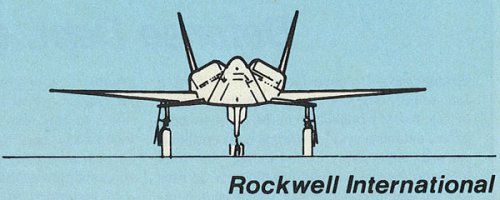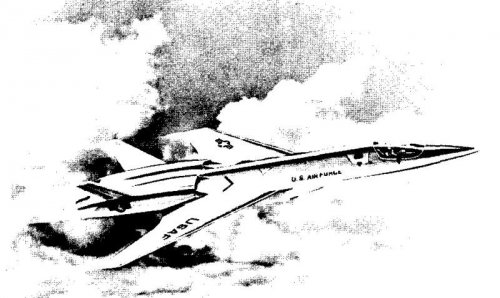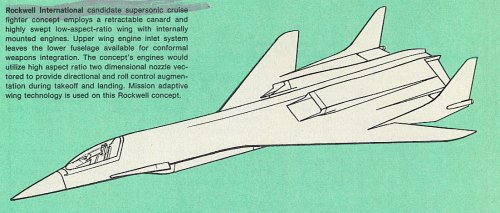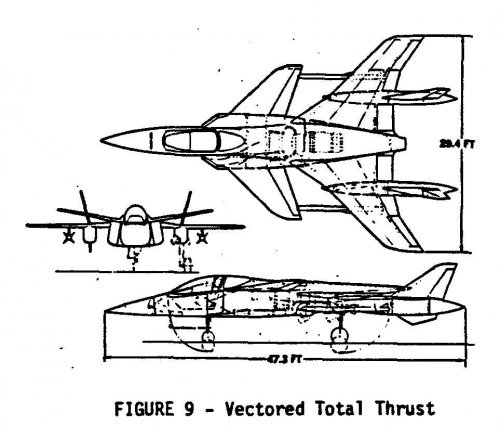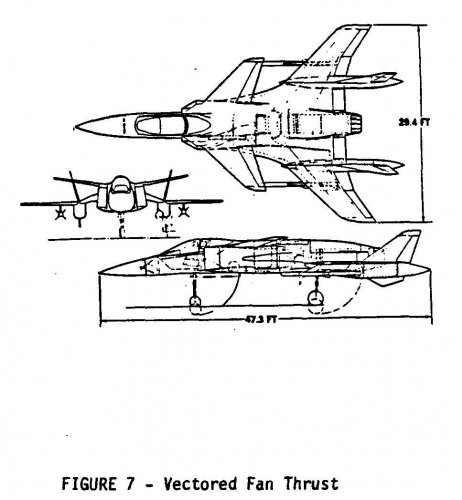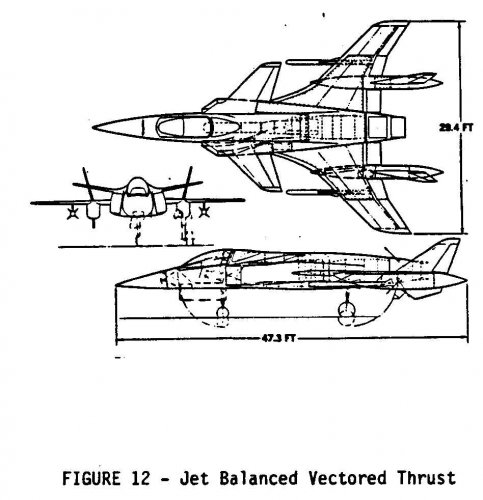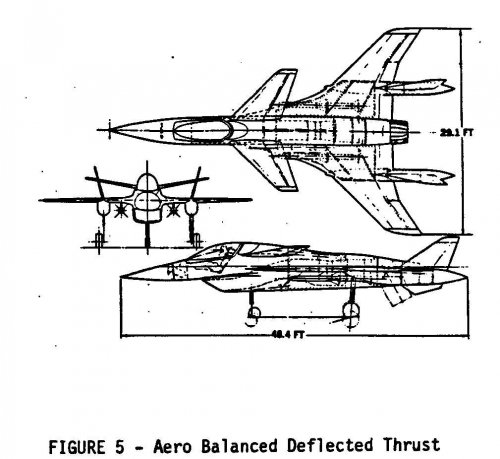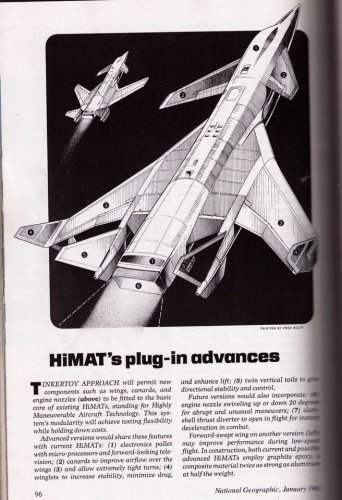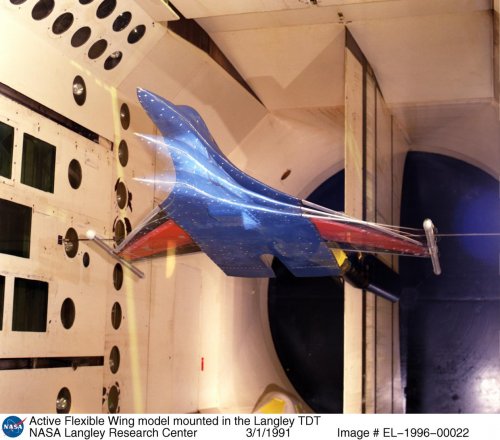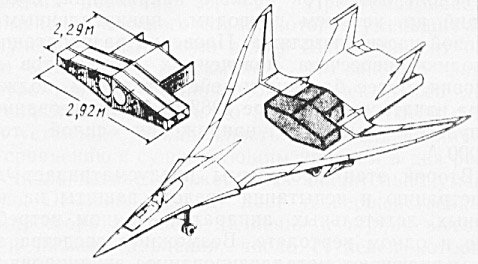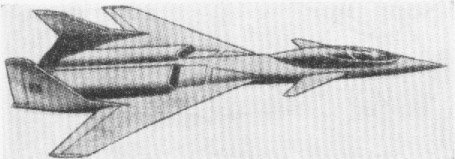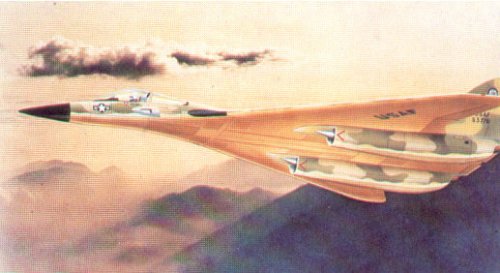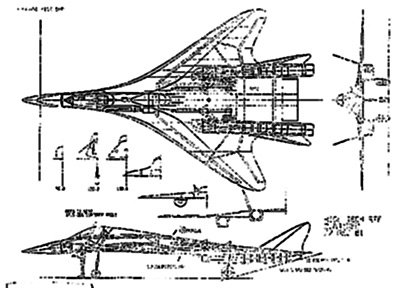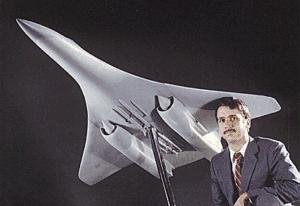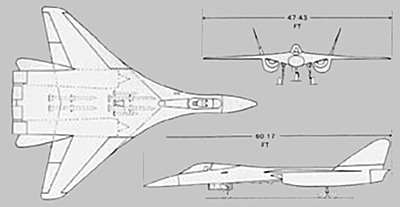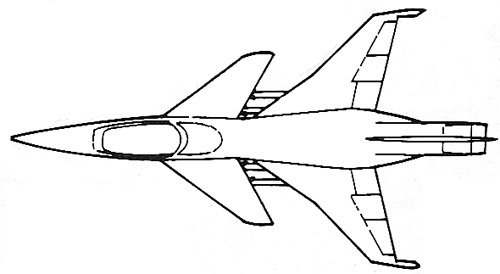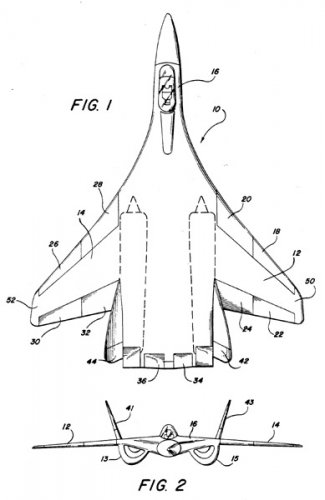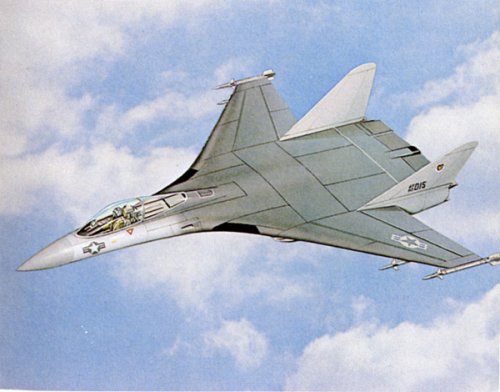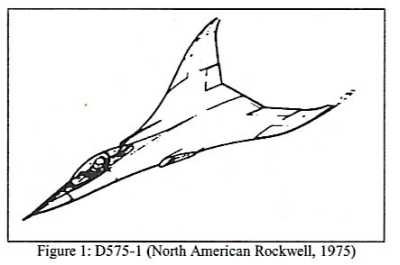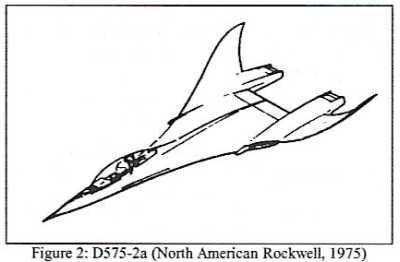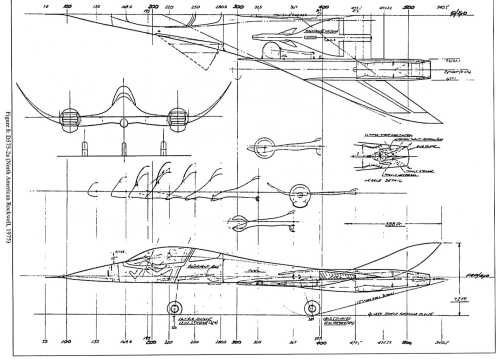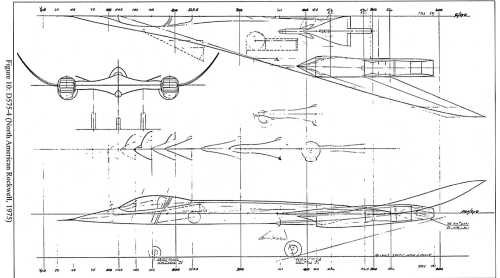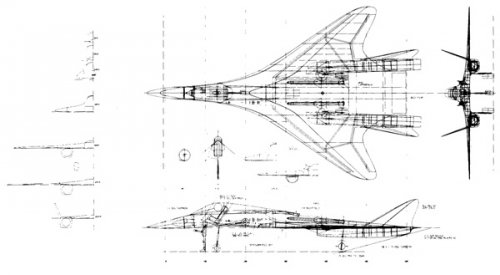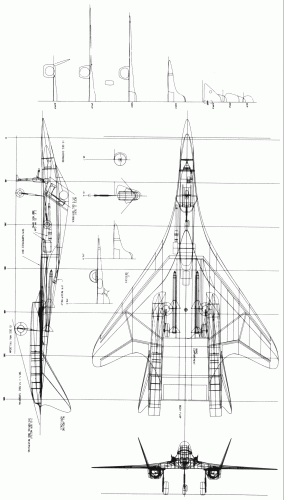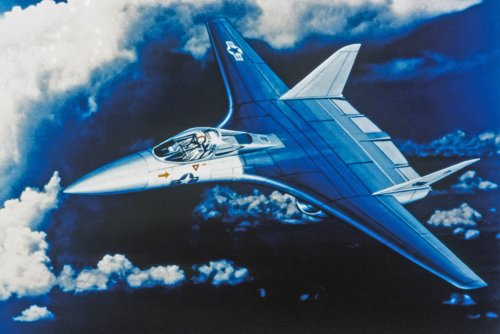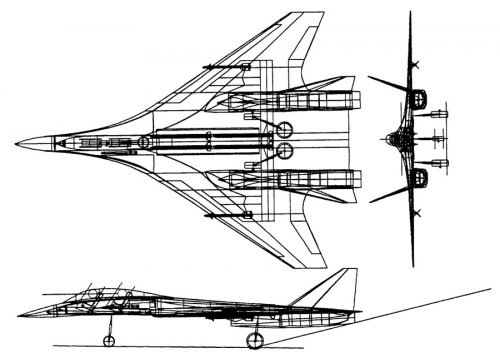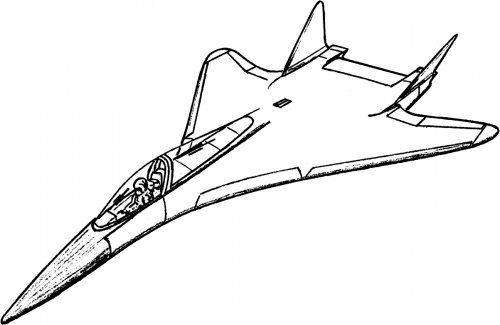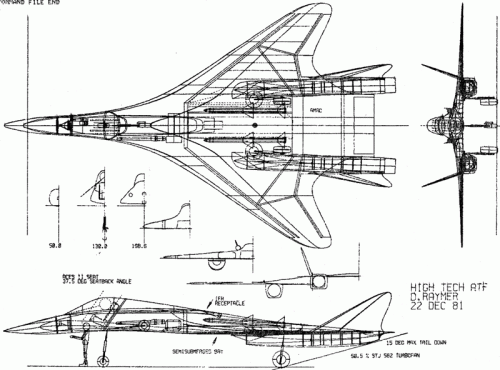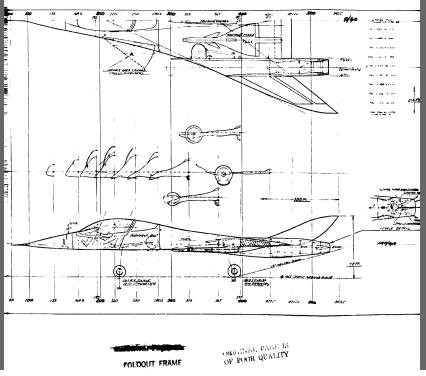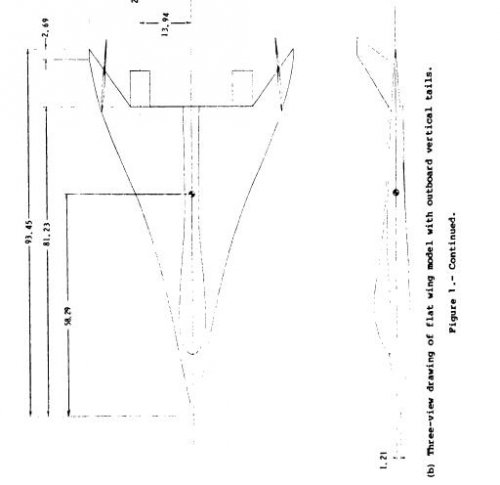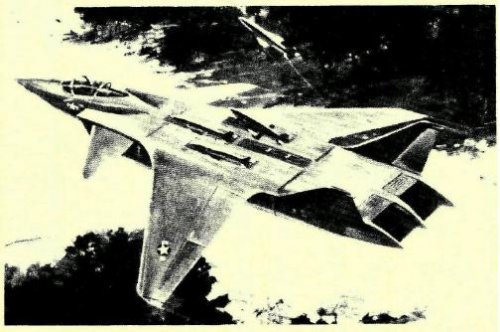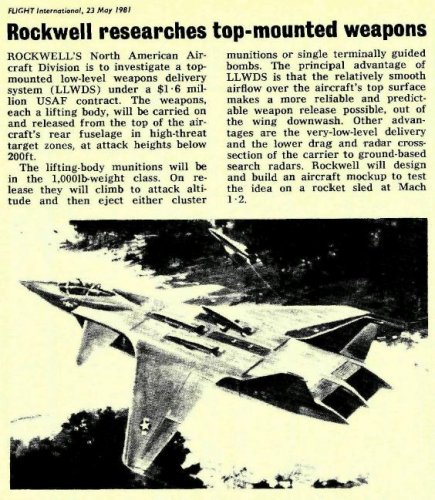Thread to discuss Rockwell pre-ATF and ATF Projects.
Merged with existing Rockwell ATF threads by Overscan
If I knew how to add a pic, I'd attach it, but in a 1981 issue of Aviation Week & Space Technology, there was a page of sketches of ATF designs. One that's had me intrigued is a Rockwell design & it is just a front view sketch. For the life of me, it looks very reminiscent of the front view of the fictional Soviet MiG-31 "Firefox", of Clint Eastwood's 1982 movie of the same title. Low wing, top mounted intakes, flat/chisel-like nose, twin outward canted verts & looks like low mounted canards. Maybe even a bit like an F-117 even. I can email a copy if anyone's interested. If some of you guys have an idea about additional info on this design, I'd love to know more.
Merged with existing Rockwell ATF threads by Overscan
If I knew how to add a pic, I'd attach it, but in a 1981 issue of Aviation Week & Space Technology, there was a page of sketches of ATF designs. One that's had me intrigued is a Rockwell design & it is just a front view sketch. For the life of me, it looks very reminiscent of the front view of the fictional Soviet MiG-31 "Firefox", of Clint Eastwood's 1982 movie of the same title. Low wing, top mounted intakes, flat/chisel-like nose, twin outward canted verts & looks like low mounted canards. Maybe even a bit like an F-117 even. I can email a copy if anyone's interested. If some of you guys have an idea about additional info on this design, I'd love to know more.

